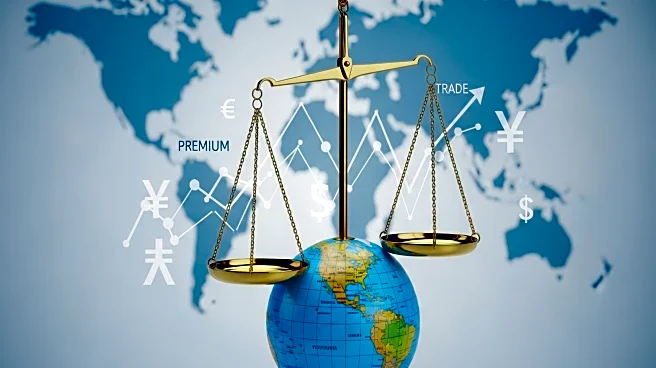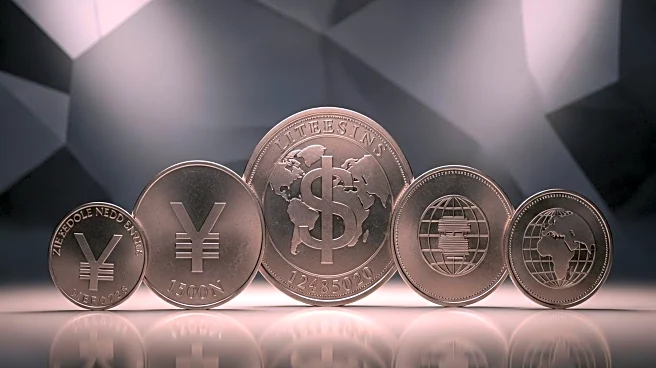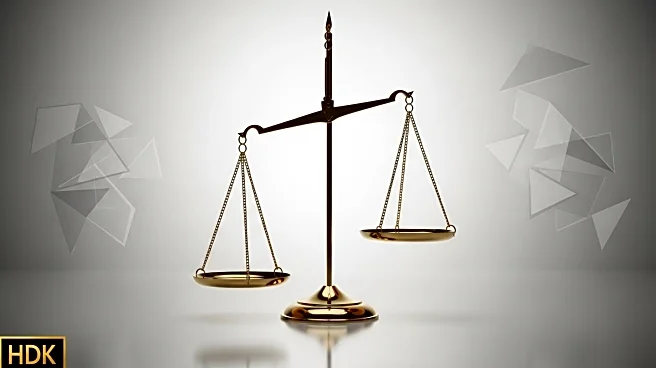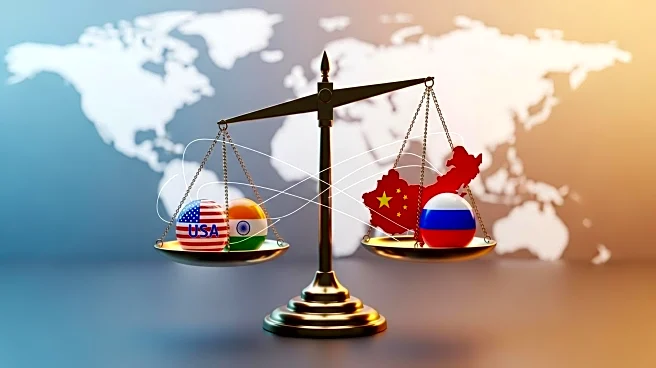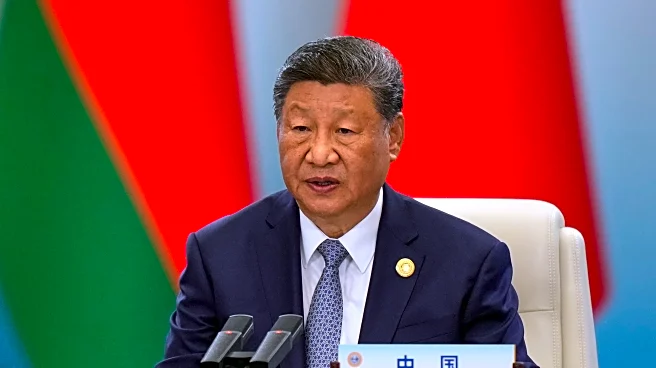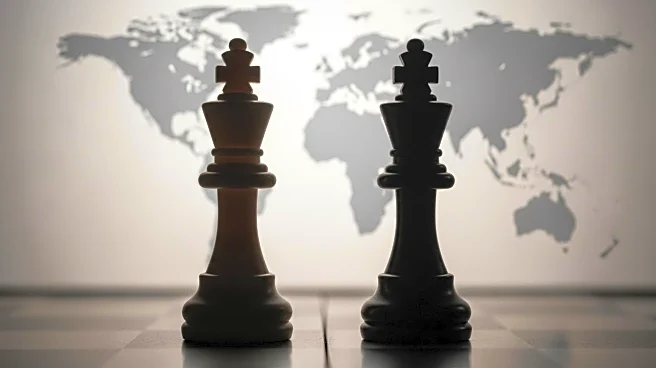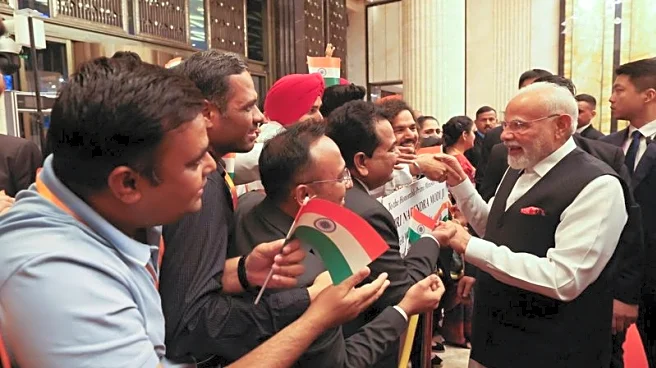What's Happening?
The Trump administration has imposed 50% tariffs on Indian goods, targeting sectors such as textiles, gems, and industrial chemicals. This move is a response to India's continued purchases of Russian oil, which has led to a realignment of economic and geopolitical alliances in the Global South. India is strengthening ties with China and Russia, forming a trilateral economic axis. This includes commitments from China to supply India with rare earth minerals and expanded trade between India and Russia. The tariffs have prompted India to pursue strategic autonomy, evidenced by Prime Minister Narendra Modi's visit to China and easing of visa restrictions.
Why It's Important?
The trade standoff is reshaping global investment dynamics, with the Global South emerging as a strategic frontier. The U.S. tariffs have accelerated de-dollarization efforts and South-South cooperation, as BRICS nations advance a parallel economic architecture. This includes initiatives like the BRICS Cross-Border Payments Initiative, which facilitates local-currency transactions. The shift is driving capital reallocation into sectors like clean energy and manufacturing, where the Global South holds comparative advantages. Investors are increasingly prioritizing BRICS-linked assets to hedge against dollar depreciation and geopolitical volatility.
Beyond the Headlines
The standoff highlights the rise of BRICS+ as a counterweight to Western dominance, with institutional innovations like the New Development Bank providing condition-free financing. The inclusion of Saudi Arabia and Egypt in BRICS+ amplifies the bloc's demographic and economic weight. For investors, the U.S. tariff strategy has inadvertently united the Global South under a shared vision of multipolarity, emphasizing the need to align with this shift and capitalize on emerging market opportunities.
